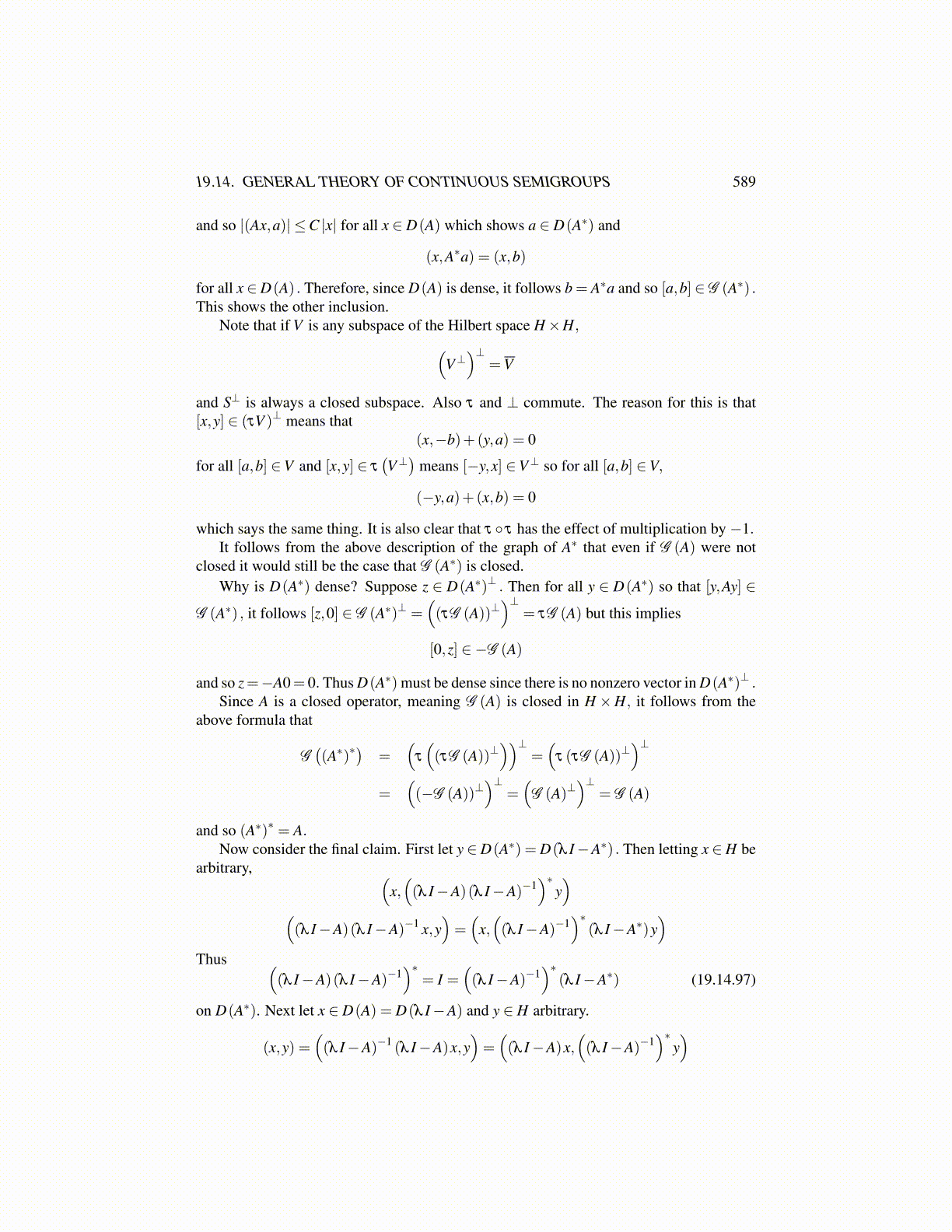
19.14. GENERAL THEORY OF CONTINUOUS SEMIGROUPS 589
and so |(Ax,a)| ≤C |x| for all x ∈ D(A) which shows a ∈ D(A∗) and
(x,A∗a) = (x,b)
for all x ∈D(A) . Therefore, since D(A) is dense, it follows b = A∗a and so [a,b] ∈ G (A∗) .This shows the other inclusion.
Note that if V is any subspace of the Hilbert space H×H,(V⊥)⊥
=V
and S⊥ is always a closed subspace. Also τ and ⊥ commute. The reason for this is that[x,y] ∈ (τV )⊥ means that
(x,−b)+(y,a) = 0
for all [a,b] ∈V and [x,y] ∈ τ(V⊥)
means [−y,x] ∈V⊥ so for all [a,b] ∈V,
(−y,a)+(x,b) = 0
which says the same thing. It is also clear that τ ◦ τ has the effect of multiplication by −1.It follows from the above description of the graph of A∗ that even if G (A) were not
closed it would still be the case that G (A∗) is closed.Why is D(A∗) dense? Suppose z ∈ D(A∗)⊥ . Then for all y ∈ D(A∗) so that [y,Ay] ∈
G (A∗) , it follows [z,0] ∈ G (A∗)⊥ =((τG (A))⊥
)⊥= τG (A) but this implies
[0,z] ∈ −G (A)
and so z=−A0= 0. Thus D(A∗) must be dense since there is no nonzero vector in D(A∗)⊥ .Since A is a closed operator, meaning G (A) is closed in H ×H, it follows from the
above formula that
G((A∗)∗
)=
(τ
((τG (A))⊥
))⊥=(
τ (τG (A))⊥)⊥
=((−G (A))⊥
)⊥=(G (A)⊥
)⊥= G (A)
and so (A∗)∗ = A.Now consider the final claim. First let y ∈D(A∗) = D(λ I−A∗) . Then letting x ∈H be
arbitrary, (x,((λ I−A)(λ I−A)−1
)∗y)
((λ I−A)(λ I−A)−1 x,y
)=(
x,((λ I−A)−1
)∗(λ I−A∗)y
)Thus (
(λ I−A)(λ I−A)−1)∗
= I =((λ I−A)−1
)∗(λ I−A∗) (19.14.97)
on D(A∗). Next let x ∈ D(A) = D(λ I−A) and y ∈ H arbitrary.
(x,y) =((λ I−A)−1 (λ I−A)x,y
)=((λ I−A)x,
((λ I−A)−1
)∗y)